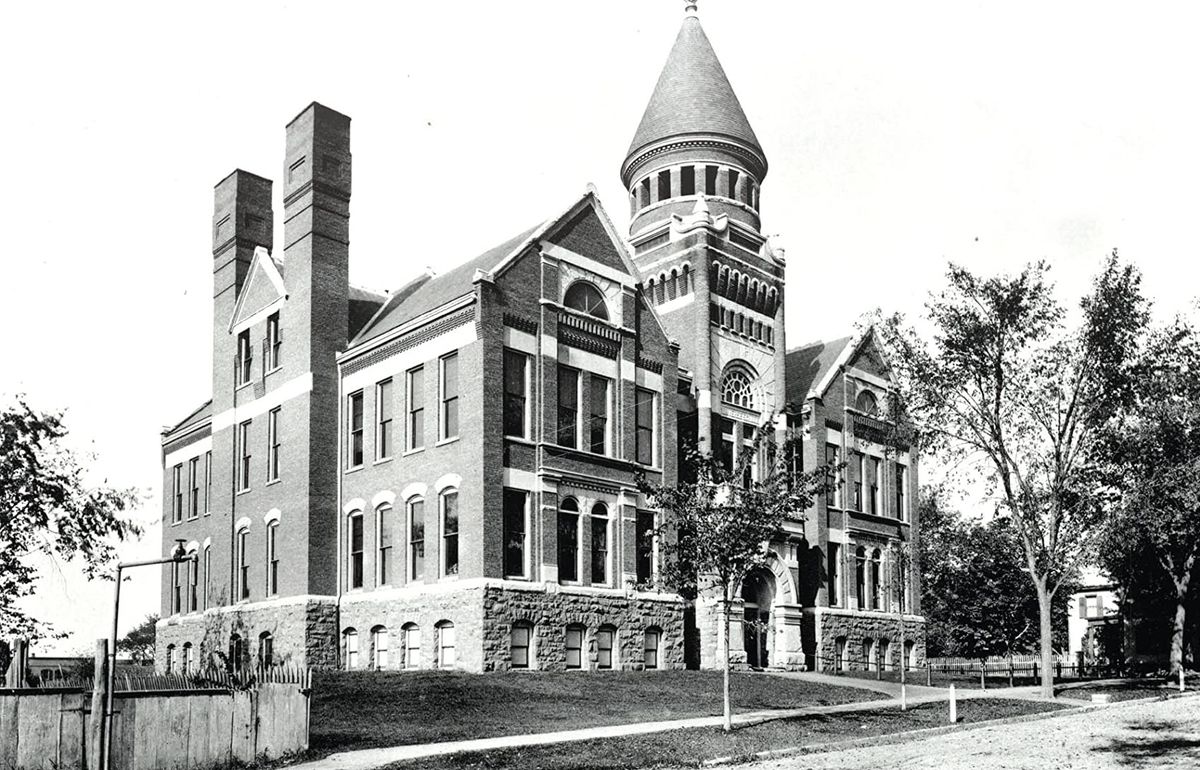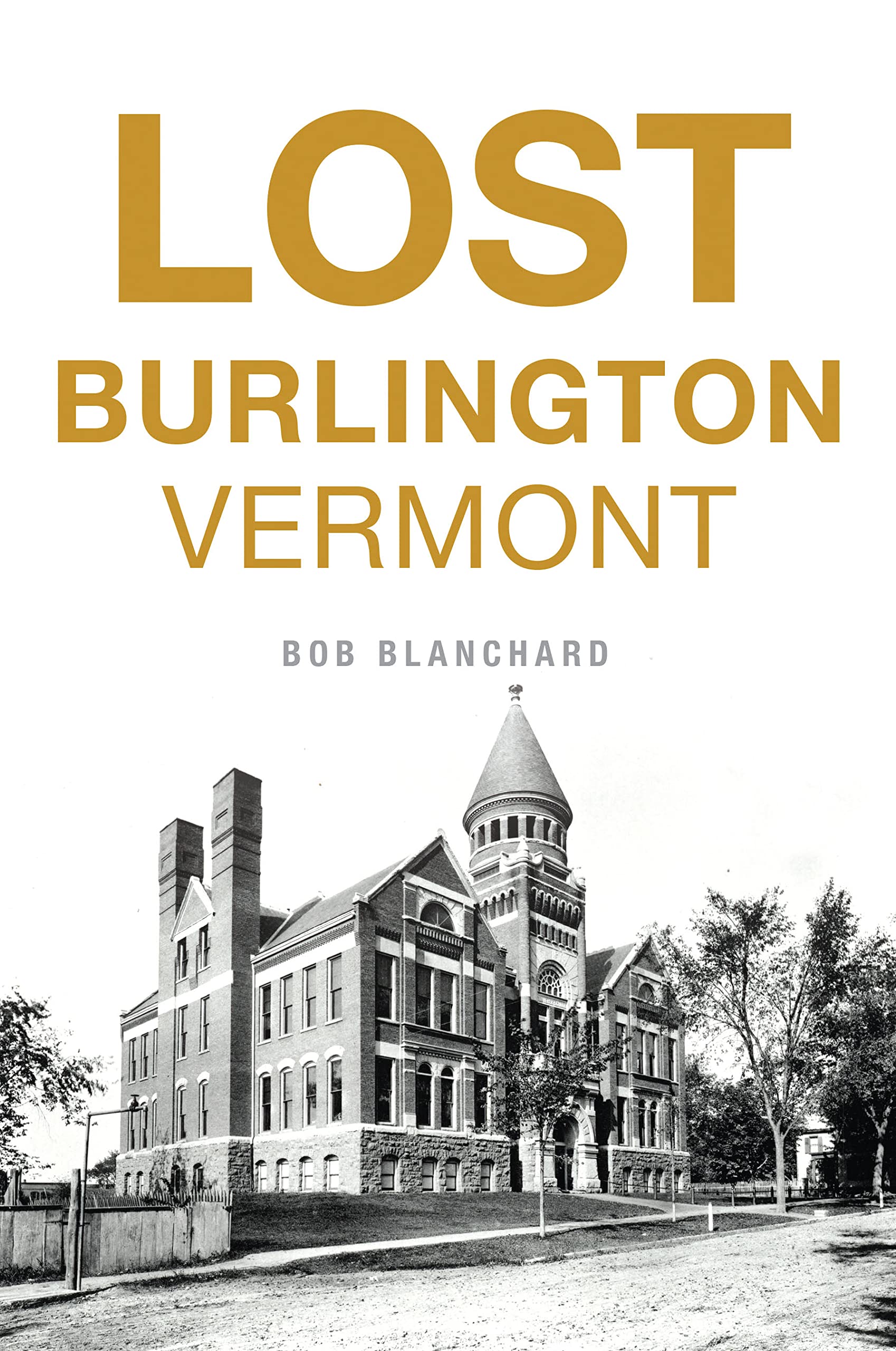Lost skylines
An interview with Lost Burlington Vermont author Bob Blanchard

This interview was originally published in the Vermont Historical Society History Happens newsletter that I write and edit. You can subscribe here.
If you drive through the city of Burlington, you might find your eyes wandering across the rows of houses and buildings that climb the hills above Lake Champlain. The city is a wonder of architecture, with some dating back hundreds of years. That rich collection is the subject of a new book from Bob Blanchard, Lost Burlington Vermont, which examines the history of the city, as well as some of the city's buildings that have since been lost; some from fires, others through demolition or neglect.
Cities never quite sit still: buildings come down and get put up, and over time, the only thing that remains of the old skylines are the memories of the people who saw them. Blanchard's book is a fascinating read, and he took a couple of minutes recently to chat with us about how he put the book together.
Tell us a bit about yourself: how did you get interested in history, and in particular, how did you get interested in Burlington’s architecture?
I’ve always been interested in history. I majored in it at UVM, but was busy with career and family so that history remained just a pastime to be enjoyed by reading history books for many years. My interest in Burlington architecture goes back to the purchase of the 1893 book “Picturesque Burlington” at the long gone used bookstore Bygone Books on lower Main Street.
The book featured numerous photographs of old buildings in the city that I never knew existed, such as the mansion of LeGrand B. Cannon at the Overtake estate on South Prospect Street. That was about 40 years ago, and even though I never did anything with it, every once in a while I would take out that book and marvel at how Burlington looked in 1893. So that stimulated my interest in the architecture of old Burlington.
You founded the Burlington Area History Facebook group in 2019, and it now counts more than 23,000 people as members! What do you think is the greatest appeal for members? Is it the nostalgia of looking back on the city as people might have remembered it, or is there something else?
There’s no question that the posts on my Facebook group that feature nostalgia get far greater reaction than those featuring history. By nostalgia I mean posts that feature things that people remember from their own lifetime. The ability to make a personal connection with a post generates much stronger response than something from the 19th century, or even from the World War II years. So a photo of something from the 70s, which many remember from personal experience will almost always generate strong reaction and comments.
You’ve been posting images that you’ve found in your research in that group: can you tell us a bit about your process? How do you go about working through the special collections that UVM and Champlain College hold?
UVM Special Collections has so much that it’s hard to get your arms around it. There is a lot available in their open stacks, such as all of Burlington’s city reports, all of the city directories, and so forth. But the real gold as far as I’m concerned, the photographs, are all in their closed stacks. Their finding aids are a help, as you can narrow down those collections that feature photos, but it is a very inexact science. Policy requires that you submit requests for boxes at least two days prior to your arrival because not all of their collections are on site, and need to be retrieved. So I would submit a list of boxes that I wanted retrieved, and then go through each item in those boxes when I arrived.
Some days were fruitful, others frustrating. The archive of the James Detore’s photographs of Burlington, taken mainly in the 40s and 50s, features around 40,000 images, all negatives, none of which have been digitized. For a couple of years, I tried submitting lists of key words to search in the Detore envelopes, which I would then search, nearly always with disappointing results. The scant information on each envelope often had nothing to do with the photos inside, so the archive is just not very searchable using key words. This past winter I finally decided to just go through all 40,000 negatives, a process that took eleven visits of seven hours each. Each negative then needed to be reversed and enhanced, which took many more hours, but the result was a collection of priceless images of Burlington from those decades, most of which have never been seen before.
Champlain College Special Collections is a very different situation. There are no open stacks, but a much higher percentage of their holdings have been digitized, making searching a much easier task not even requiring a visit. But on a few visits to their collections, I have always come away with some interesting items from their non-digitized materials. I contact the director and let her know what I’m looking for. When I arrive she has the material out for my perusal and for me to photograph.
What’s an example (or two) of something special that you’ve found in the course of your research?
I would say that the most significant thing has been the set of photos of the Frank R. Wells mansion that I found. I sometimes refer to this as the mystery mansion of Burlington, because even though it was in the heart of the city, it was set way back from the street on a 15 acre lot surrounded by trees and shrubs. Most people in town didn’t even know it existed.
Wells was second generation of the family that founded Wells & Richardson on College Street, and became wealthy as a result. Finding photos of this mansion became a bit of a personal quest to me, as the only depiction of it that I had ever seen was an outline of the building on a map, where it was just identified as a dwelling. After a lot of searching, I finally found an article in an old architectural magazine that was published after the mansion was completed. It had several photographs as well as floor plans. Nearly four years after I started searching, these are still the only pictures of that building that I have ever found.

Tell us a bit about how you planned out your book, Lost Burlington Vermont? Given the number of pictures that you’ve posted, it seems like you had to do a lot of picking and choosing for it.
From research done for my Facebook Group, I had a good mental list of lost buildings that I wanted to include. Most were large public buildings, although there were several mansions on large estates as well as a few of what I call “grand homes” as well. I then sorted these into categories such as charities, schools, hotels, and so forth, to organize the structure to make searching a bit easier for readers.
The publisher had imposed strict limits on the number of words and photos, so a few things did get left out, which was frustrating. Before I knew about the photo limit, I had submitted about 140 photos to be included, and I had to cut that by half. So a lot of great images got cut. I tried to select the best quality images of whatever I included. In a few cases, such as the poor house, and the old jail with the rotating rectangular cell block, there was only one image available, so a lesser quality image made it into the book. In a few cases of very significant lost structures, such as the two cathedrals, I included two photos, one interior and one exterior.
As you worked on the book, was there any central message or lesson that you learned about Burlington as you wrote?
There were several themes that came out as I wrote the book. One is that the city’s wealthy elite was substantial for a city as small as Burlington. That wealth came mainly from lumber and related industries, but Burlington’s favored location on Lake Champlain also attracted very wealthy people, mainly from New York, to build great estates as summer homes there. Examples include Henry Holt, the Webb family, and LeGrand Cannon. All this wealth enabled the construction of many grand homes and significant public buildings, many of which have been lost, mainly to fire (about 20 of them burned).
Another theme that I saw was how the historic preservation movement took hold in Burlington over time. As I have mentioned numerous times, the magnificent Howard Mission building on the corner of Clarke and Pearl was torn down in 1964 without a whimper of opposition. By the early 80s, when the hospital wanted to tear down the old mansion on South Williams Street that was then the Catholic bishop’s residence, there was a lot of organized opposition, but it only served to delay, not prevent that demolition. Burlington now has very strict limits on what can be done even by way of renovations to any building that has been deemed historic. Hundreds of buildings in the city are listed on various registers of historic places, from national to local listings. Some argue that the pendulum has swung too far in the opposite direction.
What’s next for you? Any other books or other projects on the horizon?
I have been asked by the publisher to do a second book for them. After considering half a dozen ideas, I have settled on one for this next book. I am currently exploring other publishing options to see what else is out there. It would nice not to have to deal with limits on photos and words again. The book would not be limited to Burlington, but would expand to all of Chittenden County, and would not be just lost buildings and such. It would feature more nostalgia in addition to history, so entities featured would span from the 1920s to the 1970s.
Lost Burlington Vermont is now available at the museum bookstore in Montpelier and online.